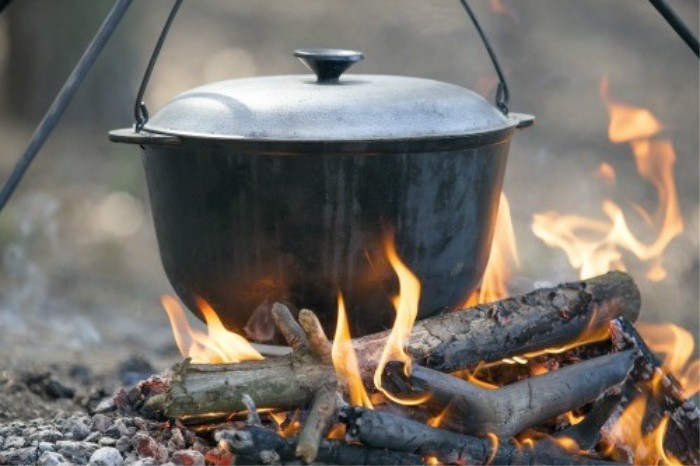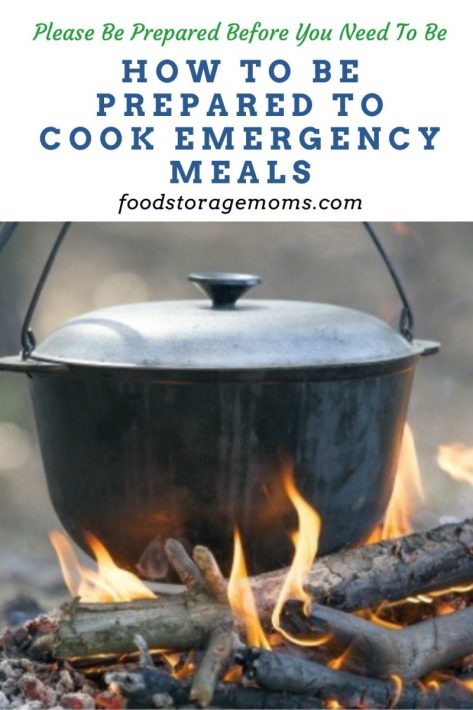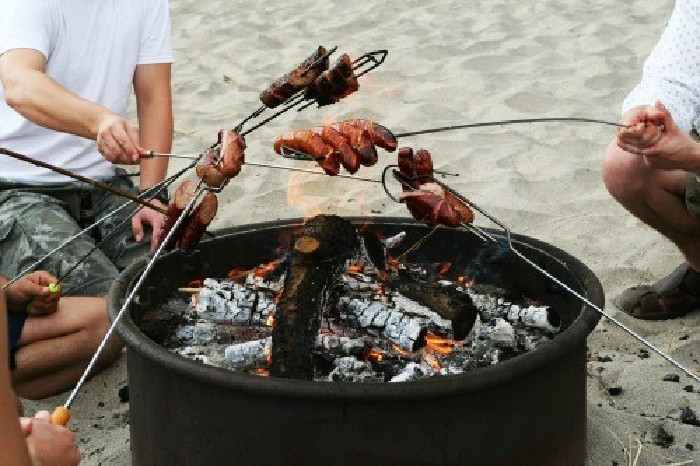
Today’s post is to help people be prepared to cook emergency meals outside. If and when we have a power outage, and we will, we need to be able to cook emergency meals. Some of you may have purchased packages of food where you just add tepid or boiling water. Well, you will need a way to boil that water.
I’m going to give you the choices I recommend because I have used all of these and have them stored ready to cook food for my family. Here’s the deal, you need fuel as well, so I will suggest some fuel options for you to use with your cooking devices.

I have taught classes for several years on how to use the following cooking devices. I will say this, I have cooked inside buildings (for classes) and my own home with a butane stove. I recently saw a box at a store containing a butane stove that stated: “designed to cook outside.” So, I will leave the decision to you whether you feel safe using one inside your home. I gave all four daughters a butane stove with butane canisters. Here’s the deal, you would never cook for several hours on a butane stove, it’s designed to boil water, make coffee, heat up a meal, make some hot chocolate or warm up a can of beans in a pan.
Cook Emergency Meals
Butane Stove
Pro: Inexpensive, uses very little fuel to boil water and you can cook emergency meals
Con: It can only hold a small pan or pot
Fuel: Uses butane fuel, once the fuel is gone it cannot be used with any other fuel Butane Canisters
Kelly Kettle
Here is my post on how to use a Kelly Kettle
Pro: Uses pine cones, leaves or dry twigs, basically free fuel
Con: You may say it’s a little pricey, but you can gather free fuel, in most cases, so for me, it is not pricey
Fuel: Pine cones, leaves or dry twigs
Dutch Oven
I prefer a 6-quart Cast Iron Dutch Oven or smaller because of weight. I can’t handle the 8-quart size, but I know they are popular. I also like to buy the Dutch ovens with the lids with a lip like this one: Dutch Oven because you can stack them when cooking meals.
Pro: They will last forever if treated and stored properly, fairly inexpensive, you can cook emergency meals in these
Con: They will rust if not properly stored and cleaned (but you should be able to salvage any cast iron pot, within reason)
Fuel: Fire pit, wood stove if it has a cooking shelf, directly on charcoal briquettes, or lump charcoal or wood
Lodge Cast Iron gave me permission to print this cooking sheet for Dutch Ovens: Dutch Oven Chart
Volcano Stove
Here’s a post on how to use Volcano Stove: Volcano Stove Pictures by Linda
Pro: You can boil water, cook on a griddle, you can also cook emergency meals in one of these with a tent, if desired, you can use a medium size cast iron pot on this stove
Con: Fairly expensive but it uses three different fuels, wood, charcoal briquettes, propane (make sure you have the right adaptor for the small tanks of propane and/or the larger propane tanks
Camp Chef Stove/Oven Combo
This is a great one because I can bake a casserole or bread in the oven, if I remove one shelf for the bread, anyway. Camp Chef
Pro: You can bake, fry, boil, and make just about any meal on the top of the stove or inside the oven
Con: Uses propane, once the propane is gone you cannot use this stove with other fuels
Fuel: Propane only, make sure you have both adaptors for the large propane tanks or the small canisters
Camp Chef Two-Burner Stove
I love this one because you can cook with fairly large pans. I picture boiling water for spaghetti with this baby when we have a grid down in our neighborhood. Camp Chef two-burner stove
Pro: Extremely sturdy, and somewhat expensive but uses fairly large pans to cook emergency meals
Con: When you run out of propane this unit will not work, fairly expensive
Fuel: Propane only
Barbecue
I really don’t want to talk about the gas barbecues since they will waste so much fuel just to boil water. But it is an option.
Pro: Just about everyone has a gas barbecue
Con: Once you run out of fuel, the barbecue is less attractive for use, although briquettes can be used, just not as efficient for general use
Fuel: Propane and briquettes, unless you have a pellet one, but once the fuel is gone you’re out of luck
Fire Pit
I bought two different fire pits, one from Amazon and one from Lehman’s. Lehman’s had a great sale one and I had to wait to have it crafted and shipped, but it is so worth the wait.

Pro: You can buy different sizes in so many different materials, I opted for a copper one and a steel one. You can build one fairly inexpensive with bricks and adding gravel inside the pit
Con: Expensive if you buy one premade
Fuel: Depending on the material, you can use wood, charcoal briquettes, and lump charcoal
Sun Oven
I actually have two Sun Ovens, I was given one for a review and then I purchased a second one because I love them so much. I live in Southern Utah so sunshine is pretty consistent in our area. Sun Oven
Pro: Sunshine, if available, is free to cook emergency meals
Con: Fairly expensive and I do not recommend these if you have very little sunshine in your area
Fuel: Sunshine
I hope this post today gets you excited to be prepared to cook emergency meals when you need to after a disaster. Please practice now with any cooking device you may have purchased. Please get them out of the box and learn how to use them if you haven’t already. Practice cooking with them today before an unforeseen emergency hits your neighborhood. May God bless you for being prepared.
My Book: “Prepare Your Family for Survival” by Linda Loosli
Copyright Images: Firepit: AdobeStock_11610595 by Acik, Dutch Oven: AdobeStock_57870160 by svetlankahappy
The post How To Be Prepared To Cook Emergency Meals appeared first on Food Storage Moms.
from Food Storage Moms
No comments:
Post a Comment